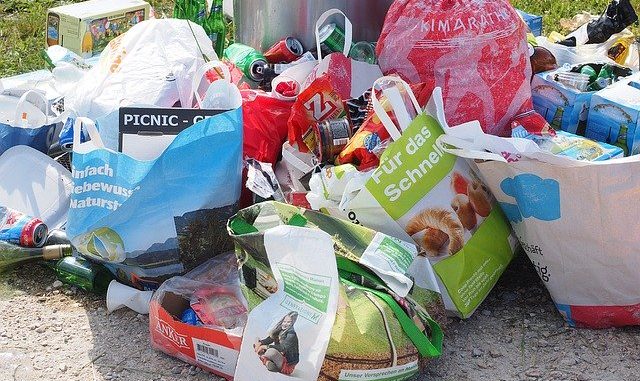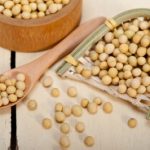
Food waste is a shocking issue!
We have an increasing world population which is also experiencing greater hunger than ever. The prospective world population may be about 9.7 billion people by 2050. We have ever decreasing natural resources with a reduction in fertile land, loss of fossil fuels, loss of potable water and so on. On top of this there are changing consumer demographics which is placing greater demands on our food production operations.
Given our voracious demand for food, the increase in global food production needs to be about 50%.
And then we still have food waste (again)!
In the USA, they reckon that 35 to 40 million tons of food are wasted every year and that was a figure produced in 2014. One statistic estimated we lost 55 million tons of food annually around the world. It’s likely that figure has risen. Apparently, that first statistic from the National Consumers League in 2018 equates to 40 per cent of all food produced collectively from nations like the USA, Australia, New Zealand and Canada. I didn’t have a figure for Europe but it will be similar no doubt.
A really neat table taken from the Natural Resources Defense Council of the UN Food & Agriculture Dept. sums it all up.
| Type of food | % lost | % consumed |
| Fruit & vegetables | 52 | 48 |
| Seafood | 50 | 50 |
| Grain products | 38 | 62 |
| Meat | 22 | 78 |
| Milk (dairy) | 20 | 80 |
By far the worst culprit is what is happening to our fruit and vegetables although nearly half the seafood is lost before it gets to our plate.
It isn’t just the Western world though with issues. The developing world has its problems. Figures reported in 2009 give a sense of the total share of global food loss and waste and there doesn’t seem to be that much change in the proportions since.
| Region | Percentage share in energy terms (%) |
| North America & Oceania | 14 |
| Europe | 14 |
| South & South-East Asia | 23 |
| Industrial Asia (China, Japan, Korea) | 28 |
| North Africa, West & Central Asia | 7 |
| Sub-Saharan Africa | 9 |
| Latin America | 6 |
| The total is 100% which is 1 quadrillion kcal |
If you break this down further the losses before getting to the plate are, 45% of all fruit % vegetables, 45% of all roots and tubers, 30% of all cereals and 20% of oilseeds and pulses.
A lot of food is wasted before it reaches us – lots of rotting in the field, it has over ripened, gets damaged in transit on the way to the grocery store. However, we find in Europe, 21 per cent of all our food is wasted in the home. Just cutting that figure would help. It’s also surprising to find that a lot of the inedible material from fruit and vegetables are lost too in the food chain. Think of all those Brussel sprout fields. There are stalks and leaves which are left in the ground and then those that are taken to the grocer, are discarded at home into food waste. We could till the stalks and other bits of inedible matter into the fields but at home that’s not possible. Unless we compost, that is food waste going into the bin.
We also know that food waste is the 3rd biggest global greenhouse gas producer behind China and then the USA in that order. Russia is fourth.
In the USA, food waste produces double the amount of carbon dioxide as all the USA ground transport combined based on some 2018 data.
If we did something about reducing this food waste issue, we might find food was cheaper and more plentiful.
Eating More Weirdly Shaped Vegetables
We have a food ideas for reducing our personal food waste.
We will achieve this by eating our own produce as we are lucky enough to have a vegetable patch. We will also attempt to eat as much of that produce as is humanely possible, especially the misshaped vegetables.
Supermarkets and retailers have long rejected oddly shaped vegetables because they do not stack well. It was long wryly thought that the European Union was the route cause of this problem because of the legislation relating to ideal produce types and what might be permissible.
One of the issues is the cosmetic aspect. When we purchase a cucumber or cabbage we expect it to conform to a particular shape. Odd looking potatoes looking like our grandmother wont cut it. Once we are over that barrier, then less food will be thrown away.
Growing vegetables is certainly one way to overcome that barrier to oddly shaped vegetables, simply because of all the effort that has gone into producing it. If the effort to produce such food, the expenditure on farming, the hours spent in producing it was truly known and above all felt then we might be more accepting. As far as I can see there is no difference in flavour between one potato and the next. Once they are prepared in the kitchen, the cosmetic element disappears entirely.
The other aspect of reducing waste is to use as much of the vegetable as possible. We also throw away a lot of what we perceive as inedible. Clearly if the veg. is diseased, or blemished then it’s a good idea to cut it out. However, what about leaving a bit more of the stem or just peeling less. Much of the good nutrition is in the skin, so keep it on the plate.



Leave a Reply